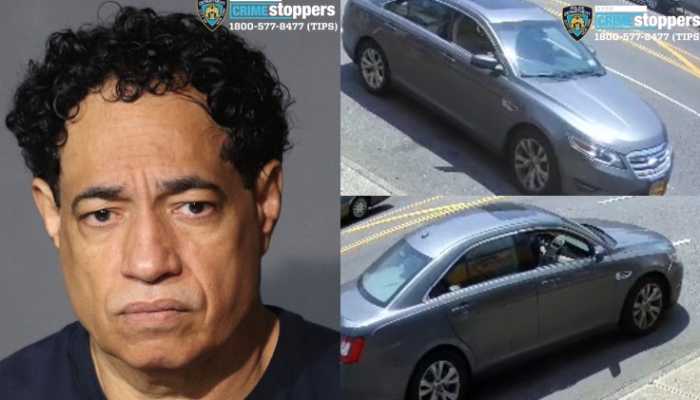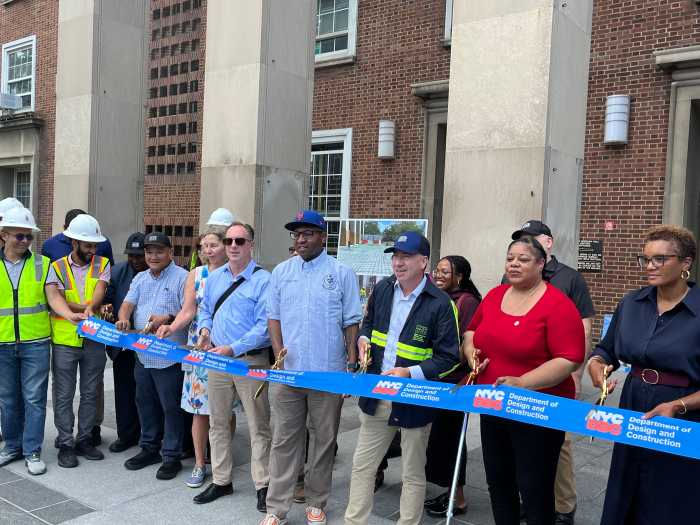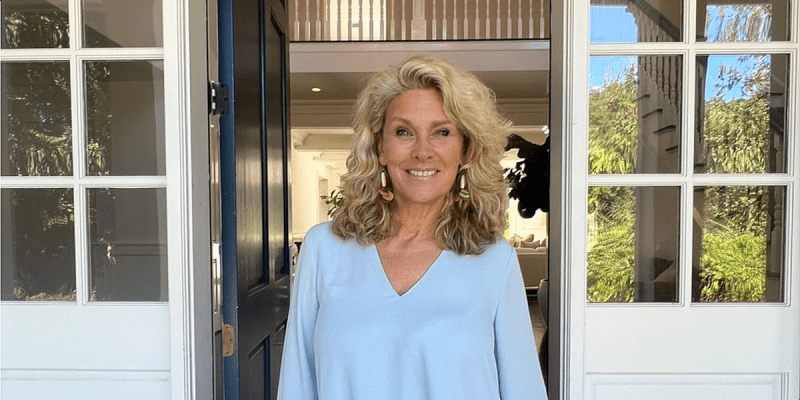By Greg Hanlon
In an intellectually rigorous and often contentious debate, Brooklyn residents took on Mayor Bloomberg’s controversial congestion pricing proposal that would charge cars $8 and trucks $21 to drive into Manhattan below 60th Street during business hours, recently at Temple Beth Emeth in Flatbush. On the pro side was Michael O’Loughlin, director of the Campaign for New York’s Future, a coalition of groups supporting Mayor Bloomberg’s PlaNYC 2030, a series of proposals designed to make New York more sustainable before 2030. On the con side was Westchester Assemblymember Richard Brodsky, who has been one of the most outspoken critics of the proposal both in the Assembly and on the 17-member New York State Traffic Mitigation Commission. Over Brodsky’s objections, the Commission recently recommended to approve a modified version of Mayor Bloomberg’s plan. The matter is now before the State Legislature, where its fate is up in the air. In his opening statement at the temple, located at 83 Marlborough Road, on February 17, Brodsky characterized the plan as inherently regressive, saying: “For the first time in the city’s history, someone is seriously proposing that we charge for access to public space. Your ability to go somewhere will depend on your ability to pay for it. When our society decides to parcel out goods based on people’s ability to pay, we’ve made a dangerous choice.” Brodsky portrayed the plan as a money grab by the city at the expense of the middle class. “It is clearly focused on raising money from moderate income people, most of whom, by the mayor’s own calculations, make less than $50,000 [a year]. And most of them are from the outer boroughs,” he said, pointing to the fact that suburban drivers, who tend to be more wealthy than those from the city, will have the congestion fee deducted from tolls they already pay. But O’Loughlin countered by saying that congestion pricing presents “a historic opportunity right now to implement a plan that would benefit the working New Yorkers who rely on the transit system.” O’Loughlin and other supporters of the proposal say that the plan would generate approximately $500 million per year, both from fees and improved economic activity derived from cutting congestion. This $500 million would go towards public transportation improvements. In his rebuttal to Brodsky, O’Loughlin pointed to statistics showing that only 5 percent of New York City residents drive into the central business district for work. That 5 percent, he said, make on average 30 percent more than the 95 percent who don’t drive into the district for work. While Brodsky claimed that the plan was regressive in principle, O’Loughlin countered by portraying the status quo as regressive. He said that congestion pricing is a proactive attempt to roll back the status quo by putting more money into the public transit system. “Right now, we are whacking it to working New Yorkers who have to pay for a transit system that’s not as good as they deserve,” he said. Another of Brodsky’s criticisms of the plan is that it’s not accompanied by an Environmental Impact Statement (EIS), a document assessing the environmental ramifications of a potential government action. Usually, an EIS is issued before the government takes action; in the case of congestion pricing, advocates want the legislature to vote on the matter with the EIS coming later. “This proposal guts the State Environmental Quality Review Act, which requires an Environmental Impact Statement before you make the decision. They are proposing to approve the plan without an [EIS] and then go through the studies,” Brodsky said. “We need an environmental review of this proposal like we need one of any other proposal,” he continued. But O’Loughlin maintained that an immediate EIS is unnecessary because the process has already undergone a lot of environmental study and public review. He also questioned Brodsky’s logic that pushing the plan through undermined environmental laws, pointing to the fact that the proposal has the support of numerous environmental groups, including the Natural Resources Defense Council, League of Conservation Voters, and the Sierra Club. Touting the environmental benefits of a plan supporters say will lead to a 6.8 percent decrease in vehicle miles driven within the “congestion zone,” O’Loughlin said, “There’s a health, road efficiency and environmental multiplier effect when cars move faster.” O’Loughlin also said that hastening the timeline on the project is necessary in order for the city to obtain $354 million that the Federal Government has promised the city if the State Legislature takes up the matter by March 31 and then eventually approves it. If congestion pricing is passed and the city receives the $354 million, the MTA has said it plans on putting much of this $354 million toward immediate short-term transit improvements that would be implemented before congestion pricing takes effect. Before the Legislature votes on the matter, the MTA is scheduled to come up with its five-year capital plan outlining the improvements it seeks to make with the $354 million plus the approximately $500 million in annual revenue. Because the capital plan precedes the vote, it is expected to contain many improvements to mass transit in the outer boroughs, where political opposition to the plan is strongest. The Commission’s report also recommends that areas underserved by mass transit should be where the first improvements are focused.

































